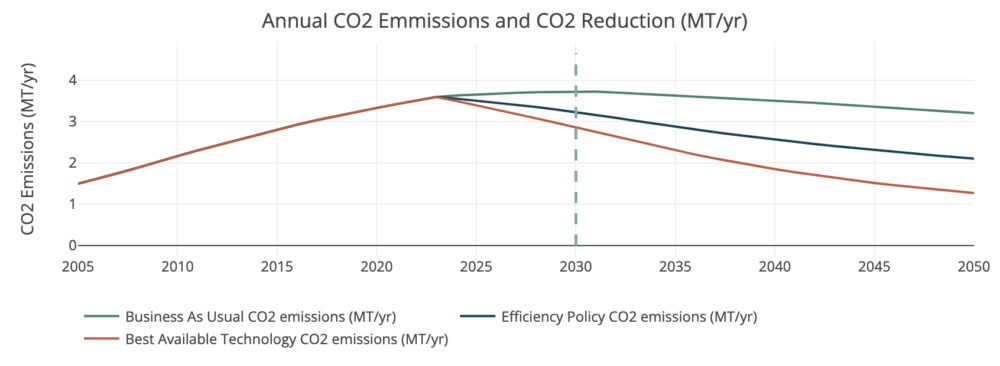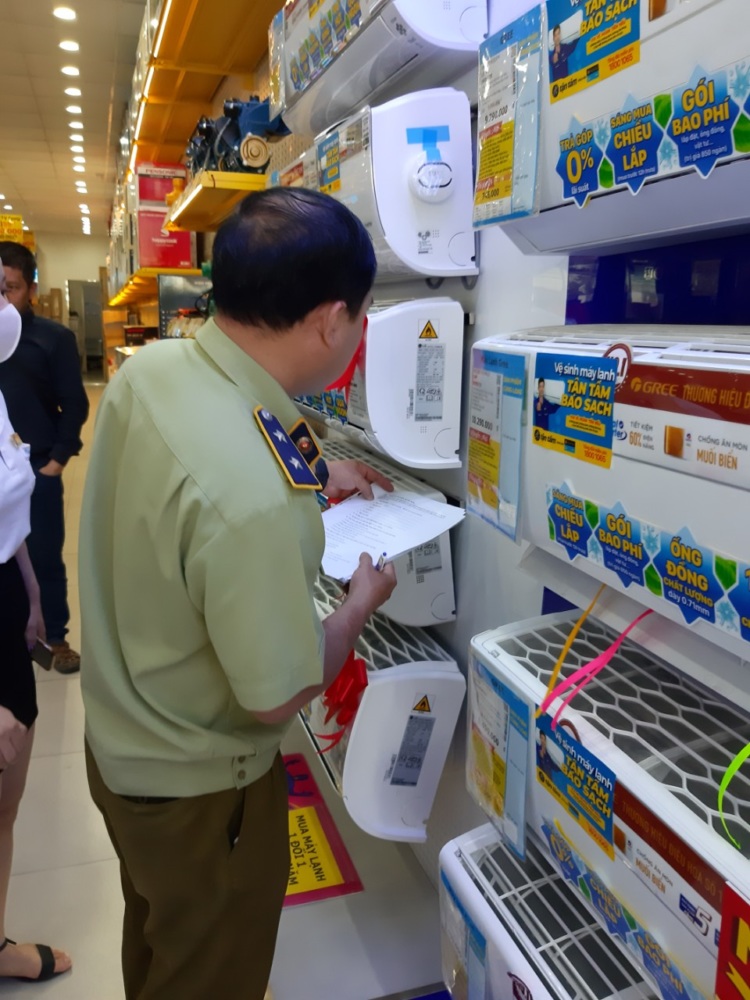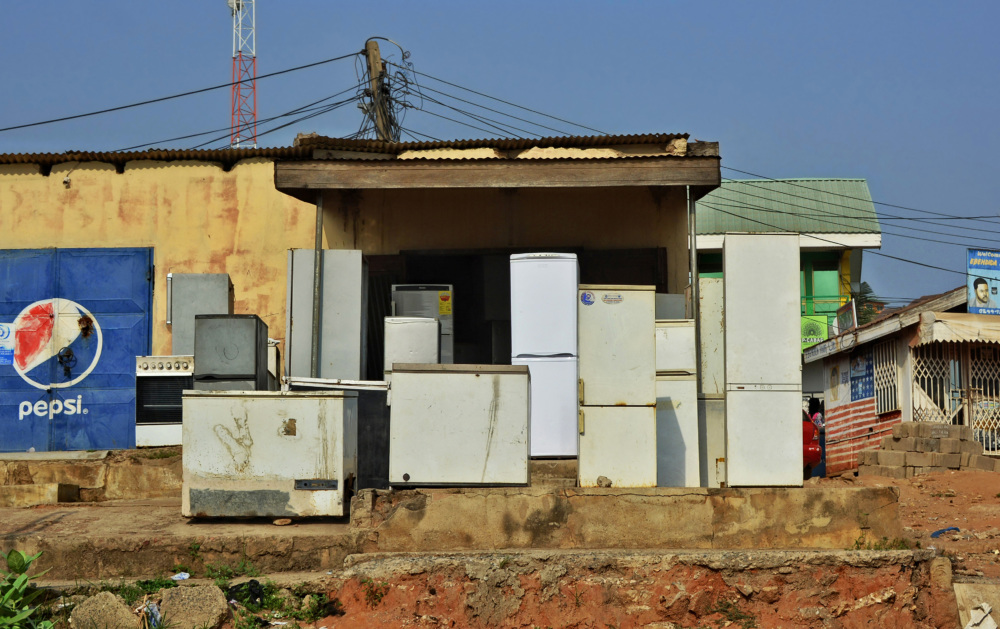Heating Electrification: The Next Opportunity for Coordinated Climate Action
This article is the first in a series where CLASP takes up emerging topics in climate and energy access; written by Stephen Pantano, CLASP Chief Research Officer.
This article is the first in a series where CLASP takes up emerging topics in climate and energy access; written by Stephen Pantano, CLASP Chief Research Officer.
Recently, some CLASP colleagues and I began engaging with the topic of electrification in the appliance sector. Electrification—which seeks to replace fossil fuel burning appliances with electrically powered alternatives—offers many benefits to consumers, the climate, and the energy grid. We wondered, knowing that electrification is essential to decarbonization, what are the biggest opportunities for global action in the residential appliance sector? What can CLASP and its partners contribute?
Among the opportunities, electric heat pumps are already a proven and widely adopted technology for replacing natural gas, propane, oil, and coal for space heating in major markets around the world. According to IRENA, around 20 million heat pumps were installed globally in 2018, and the number continues to rise. Even without a major global effort to promote research and development (R&D) and further adoption, electrified space heating is cost-effective. However, the market must grow seven-fold by 2030 in order to maximize climate benefits.
There has been a significant amount of attention on cooling in the past 5 years but no parallel global initiative on heating electrification. We believe this is a great opportunity for coordinated action, especially as countries look to supplement their existing climate commitments under the Paris Agreement.
The Opportunity
Let’s focus on space and water heating, specifically the opportunity to replace fossil fuel furnaces and boilers with electric air- and ground-source heat pumps. The potential market for heat pump technology coincides with the orange, yellow, and green portions of the map in Figure 1. This area covers most of North America, Europe, and central Asia. Areas represented in red do not require energy for space heating at any time of the year, and those colored blue are too demanding and sparsely populated for our focus.

Climate
Heating electrification presents a substantial opportunity for global progress on appliance energy efficiency and should play a role in many countries’ revised Nationally Determined Contributions and Climate Action Plans under the Paris Agreement. Electrification is a critical step on the path to decarbonizing the buildings sector since it will remove small combustion sources that are distributed throughout homes and commercial buildings today. Tens of millions of gas furnaces, oil boilers, and coal stoves that emit CO2, NOx, and other pollutants are candidates to be replaced with electric heat pumps, paving the way for a transition to greater use of clean, renewable energy for heating.
In the United States, for example, the Rocky Mountain Institute (RMI) found that “moving the US electricity system to power generation that emits zero carbon will only reduce total US emissions 30%. Widespread electrification of buildings, ground transportation, and half of industry would boost reductions to more than 70% if powered by zero-carbon electricity.” Looking globally, the Energy Transitions Commission has estimated that “in the residential and commercial building sector, at least 35% of the energy needs not currently met by electricity could be electrified by 2040 – and there are reasons to believe that the percentage could be significantly higher.”
RMI goes on to say that “the elimination of natural gas distribution has climate benefits beyond the elimination of direct CO2
emissions from combustion. Methane leakage from natural gas distribution (estimated at 2% to 4%) drives 85 times more global warming than CO2
over a 20-year period.”
In the UK, the UK Heat Pump Association
estimates that air source heat pumps reduce heating emissions by more than 60% versus oil and natural gas boilers today, and further technology improvements should lead to a 90% emissions advantage for heat pumps by 2050. Even in locations that use efficient district heating systems, where a central plant provides hot water to multiple buildings through a distribution network, heat pump technology can be employed to further improve efficiency and aid the transition to renewable energy.
The Grid
Widespread heating electrification represents a new flexible and resilient “grid of the future” resource. When deployed alongside other electrification technologies such as electric vehicles and distributed renewables and storage, the collective can fundamentally change the way the grid is managed to improve efficiency and reduce emissions.
Heating loads can be shifted to periods of low demand to reduce peak loads on the grid and enable more effective use of low-carbon renewable energy. The Regulatory Assistance Project notes that “heat pumps can help in managing system demand by preheating or precooling a space during the afternoon and running less during early evening peak periods. Smart thermostats can also enable demand response programs whereby a utility can reduce the electric load of a group of heat pumps by an individually small amount that cumulatively provides a measurable peak load reduction benefit to the grid and avoids unnecessary air emissions.”
Consumers
Heat pumps are simply one of the most efficient technologies available for space and water heating today and further adoption serves to benefit consumers. Whereas a high efficiency gas furnace may convert 90% of the available energy into usable heat, a heat pump may deliver 4 to 5 times better energy performance. Heat pumps also provide benefits in the warmer seasons, since the same piece of technology can also serve as a more efficient replacement for an air conditioner. These improvements precipitate direct cost savings for consumers, especially in locations where fossil fuel prices are high and where the incumbent technology is old and inefficient. Consumer savings can accrue further if the electric utility offers time of use rates, since a portion of space heating demand (and most water heating demand) can often be shifted preferentially to times with lower electricity rates.
Taking Action
So what can be done to spark and further an electrification effort for heating, especially as we prepare for next year’s Climate Summit?
First, we can rally coordinated action among governments, financiers, private sector companies, and philanthropies. There are models for cooperation in the cooling sector that we can draw from; groups like the Kigali Cooling Efficiency Program and the Cool Coalition are taking on the challenge of growing GHG emissions from accelerating cooling demand around the world with broad stakeholder support. A similar effort can and should be organized for heating, with the objective of raising the international profile of the issue, facilitating learning, research and development, and identifying effective policy solutions that can be rolled out quickly and at scale.
Second, we should secure financing for large-scale deployments and support necessary technology research and development. Financing is a proven and effective tool for accelerating heat pump market transformation. In China, for example, a subsidy of $3000 to $4000 per household was offered in several Northern provinces to replace coal furnaces with air source heat pumps. As a result, heat pump sales soared from 39 thousand units in 2015 to 680 thousand units in 2017. Financing must be coupled with consumer education, installer training, and other market support activities to ensure a smooth technology transition. Local market conditions, especially the characteristics of heating systems to be replaced in the existing building stock, must be taken into consideration for market transformation to be successful. In terms of R&D, groups like the IEA Heat Pump Technology Collaboration Program (with 17 member countries) and several manufacturer associations are coordinating R&D to improve energy efficiency and cold climate performance and develop low-GWP refrigerants, among other topics. These efforts can be expanded and accelerated to maximize the rate of technology improvement and drive down costs, reducing the long-term need for subsidies.
Third, we should devise coordinated policy approaches that span appliance efficiency, building codes, and electricity regulations. Efficiency standards are important to ensure that heat pumps deliver strong energy performance; building codes can mandate all-electric heating and cooling to ensure no further fossil fuel appliances are installed, and utility regulations, demand response, and time-of-use pricing schemes can be employed to improve the operating cost of heat pumps versus competing technologies. The UK Heat Pump Association has suggested establishing an emissions standard for delivered heat – a novel policy approach that would provide a distinct advantage to efficient electric heating appliances versus fossil fuel driven alternatives. In the US, municipalities such as Takoma Park, a Maryland suburb of Washington, DC, are exploring policies that would phase out all fossil fuel-based heating appliances within city limits by 2035.
“The time to act on electrification is now, as it presents a climate and health threat, and utilities are moving in the wrong direction, presenting a risk to both ratepayers and shareholders. A new customer is added to the U.S. gas distribution system every minute – more than 400,000 new gas customers per year. U.S. utilities are adding approximately 10,000 miles of new pipelines and replacing 5,600 miles of existing gas mains annually. These new investments are being amortized over the next 30-80 years, long after we need to stop burning fossil fuels,” said Stephanie Greene, Principal, Building Electrification at Rocky Mountain Institute.
Taken together, these actions would generate impactful momentum on this opportunity in the time leading up to the next Climate Summit in Glasgow. CLASP continues to engage on this topic and explore avenues to support the actions above.









